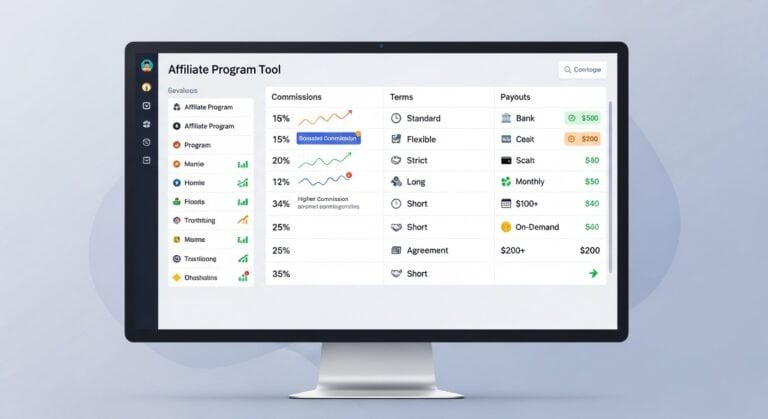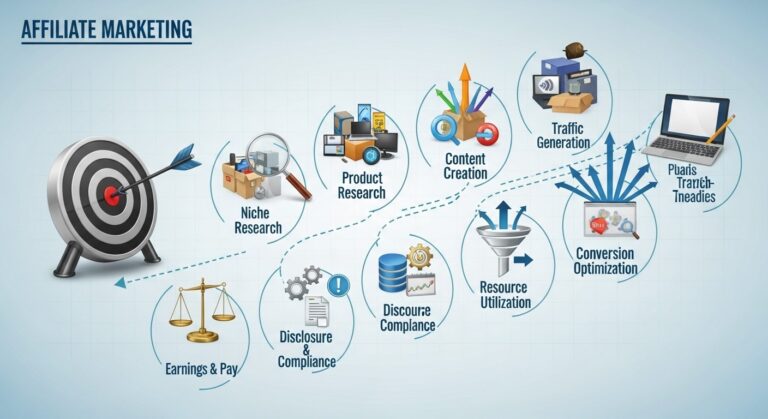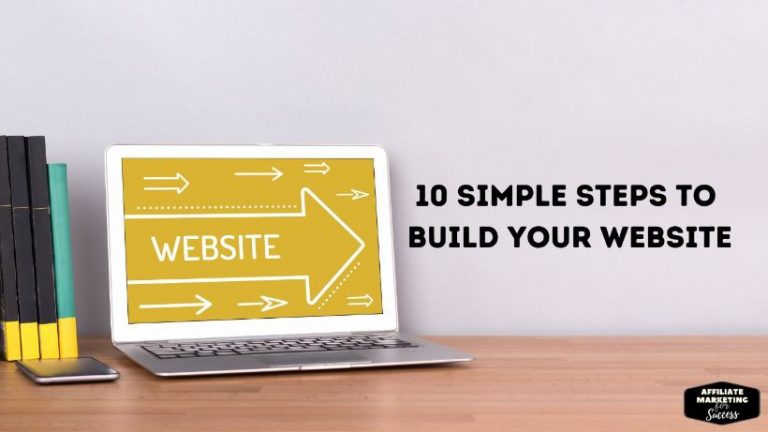Top 10 Pro Tips For Choosing Affiliate Marketing Programs That Win
AFFILIATE MARKETING IN 2026: HOW TO START A SUCCESSFUL WEBSITE PROTOCOL: ACTIVE
ID: REF-2025-01386Conclusions built strictly upon verifiable data and validated research.
Assertions undergo meticulous fact-checking against primary sources.
Delivering clear, impartial, and practical insights for application.
Most fail at affiliate marketing. They pick weak programs. Result? Wasted time. Zero commissions.
This guide fixes that. We give you 10 pro-level tips. Select programs based on power, not hype. Focus on structure, reliability, support. Find partners that convert. Partners that pay.
Read carefully. Apply each step. Build a real income stream. This is how winners choose.
Key Takeaways
- Prioritize programs with transparent, tiered commission structures and high payout caps.
- Always verify network uptime, tracking accuracy, and payment reliability before joining.
- Long cookie durations (90+ days) dramatically increase your conversion chances.
- Choose products with proven high conversion rates in their category for faster wins.
- Review program terms: watch for low payment thresholds and flexible payout options.
- Seek programs offering FAQs, banners, landing pages, and dedicated promoter support.
- Compare tools: use analytics and comparison platforms to audit performance data.
- Align your long-term goals; choose programs that scale with your audience growth.
Affiliate Marketing Programs Selection Tips: 10 Core Principles

Choosing affiliate programs? Stop guessing. Start winning. Here are the 10 core principles to separate the winners from the noise. Pick programs that pay well, convert consistently, and align with your audience.
1. Commission Clarity
What’s the payout? Is it flat? Percentage? Recurring? Know the structure. Avoid vague promises. High traffic means nothing if the rate is garbage.
2. Cookie Duration
Short cookies kill conversions. You drove the traffic. They bought last week. Why let a 24-hour cookie steal your commission? Look for 30-day or longer. Be patient.
3. Relevance Over Hype
Would your audience actually use this? Promoting random junk? Radioactive. Pick products tied to your niche. Niche relevance is non-negotiable.
| Bad Pick | Good Pick |
|---|---|
| Random weight-loss pill for tech blog | Premium laptop case for tech blog |
| Coin-based trading app for gardening site | Ergonomic trowel for gardening site |
4. Program Reputation
Check forums. Read reviews. Do they pay on time? Support their affiliates? A bad program can burn your trust fast.
5. Marketing Resources
Do they give you banners? Email templates? Not required. But helpful. Makes scaling faster. Smart affiliates use YouTube or email tools.
Pick partners like you pick teammates. Solid. Reliable. Paying attention to detail matters. Do the work before you promote. Your income depends on it.
How To Choose The Best Affiliate Marketing Programs: Your Strategic Filter
You want to pick winners. Not random programs. How? Use a filter.
Your 5-Point Strategic Filter
Ask these five brutal questions before joining any affiliate program.
- Does it pay at least $50 average commission?
- Can you actually stand the product or service?
- Does it convert at 3% or higher?
- Are customers happy or constantly canceling?
- Is the tracking cookie lasting 30+ days?
Three “no” answers? Drop it. Fast. Your time costs more.
“Promote junk and you build a junk brand. Fast money feels good. Lasting income feels better.”
— Someone who learned the hard way
Match the program to your content. A Walmart promo won’t fly on a luxury travel blog. Alignment matters. You need synergy. Check out the Walmart affiliate program if you’re in broad, frequent-purchase niches. Avoid niches with terrible reputations. See how to spot profitable niches first.
| Program Trait | Pass | Fail | ||||||||||||||||||||||||||||||||||||||||||||||||||||||||||||||||||||||||||||||||||||||||||||||||||||||||||||||||||||||||||||||||||||||||||||||||||||||||||||||||||||||||||||||||||||||||||||||||||||||||||||
|---|---|---|---|---|---|---|---|---|---|---|---|---|---|---|---|---|---|---|---|---|---|---|---|---|---|---|---|---|---|---|---|---|---|---|---|---|---|---|---|---|---|---|---|---|---|---|---|---|---|---|---|---|---|---|---|---|---|---|---|---|---|---|---|---|---|---|---|---|---|---|---|---|---|---|---|---|---|---|---|---|---|---|---|---|---|---|---|---|---|---|---|---|---|---|---|---|---|---|---|---|---|---|---|---|---|---|---|---|---|---|---|---|---|---|---|---|---|---|---|---|---|---|---|---|---|---|---|---|---|---|---|---|---|---|---|---|---|---|---|---|---|---|---|---|---|---|---|---|---|---|---|---|---|---|---|---|---|---|---|---|---|---|---|---|---|---|---|---|---|---|---|---|---|---|---|---|---|---|---|---|---|---|---|---|---|---|---|---|---|---|---|---|---|---|---|---|---|---|---|---|---|---|---|---|---|---|
| Commission Rate | ≥ $50 | < $20 | ||||||||||||||||||||||||||||||||||||||||||||||||||||||||||||||||||||||||||||||||||||||||||||||||||||||||||||||||||||||||||||||||||||||||||||||||||||||||||||||||||||||||||||||||||||||||||||||||||||||||||||
| Cookie Duration | 30+
Top 10 Pro Tips For Affiliate Program Success: Actionable Priorities Stop guessing. Start winning. Pick affiliate programs that pay. And last. Here are 10 pro tips. All tested. All proven. 1. Start with profitability, not popularityYou want high commissions. Not just hype. Does the program pay $50 per sale? Or $5? Don’t waste time on peanuts. Check payout rates. Track record. And product demand. 2. Scrutinize cookie duration30-day cookie? Good. 90-day cookie? Better. A one-day cookie? No. You won’t earn unless the user buys instantly. Cookie length = conversion window. Short window? You lose. 3. Demand tracking transparencyCan you see every click? Every conversion? Every payout? Real-time data saves you. No data? That’s a guess. Bad affiliate programs hide from numbers. Good ones show them.
4. Test speed of paymentsNet 30? Can you eat next month? Weekly payouts? Now we’re talking. Cash flow matters. Can’t reinvest if you’re broke. 5. Choose niches you understandYou eat? Promote food. Own a blog? Promote hosting. Know your niche. If you’re clueless, you’ll sound fake. And fail.
6-10. Look deeper
Pick winners. Dump lemons. Repeat. Affiliate Marketing Commission Structure Analysis: Beyond the PercentageHigh commission rates? They’re sexy. They’re not everything. Ask: What’s the payout frequency? Is it cookie duration reasonable? Does the program have a history of shady adjustments? What’s *Really* in the Fine Print?A 70% cut sounds great. Till you learn it only applies to digital products. Or sales under $50. Check the actual earnings model. Not just the headline percentage.
You promote a $200 product at 50%. You get $100. Right? Maybe. Is it a one-time sale? Or recurring? Hosting and SaaS often pay monthly. That’s $100/year. Not a single hit. Big difference.
Compare Walmart’s flat-rate model to digital SaaS offerings. One’s stable. Predictable. The other? Growth potential. Also risk. Also: Does the program allow cross-niche promotion? Or silo you hard? Can you bundle with email marketing or SEO tactics? For example, [INTERNAL_LINK slug=”effective-email-marketing-strategies” text=”using email funnels] to turn one click into 5 sales. Smart. Don’t chase flashy numbers. Study the *system*. Percentages are first-level thinking. What’s the second? Sustainability. Visibility. Control. If you can’t see how money moves, don’t join the game. High Paying Affiliate Programs For Beginners: Starting Strong You want fat payouts. You’re new. Can you start strong? Yes. High-paying programs aren’t just for veterans. They’re for beginners who pick right. Here’s how. What “High-Paying” Really MeansIt’s not just 75%. It’s 75% *and* solid volume. A $20 item at 50% beats a $100 item at 10%. Always. Test both math and market fit.
Look at Walmart’s program. Solid base. Wide reach. Good for new players. Where to Look (Right Now)
Your first product isn’t your last. But it sets the pace. Pick one with volume *and* decent margins. Ask: Can I sell 10 this month? If no, skip it.
High pay starts with high relevance. Does the product fit your audience? That’s where profit lives. Not in the % alone. In trust. In timing. Pick programs that let you play the long game. Not one-off spikes. How To Evaluate Affiliate Network Reliability: Trust, Track, VerifyTrust. Track. Verify. Pick a network like you’d pick a business partner. Is it solid? Are records clean? Can you follow the money? Check The Basics FirstNo payout history? Run. No clear terms? Run. Sounds like a scam, treats you like a number? Run faster. Even big players like Walmart’s program publish their rules out front. They don’t hide.
Demand TransparencyEver find a “tracking error” in your report? Odd drop? Verify with outside data.
Always cross-check. Use UTM tags. Test links. Track traffic sources. Can you tell where each sale came from? Good networks show real-time stats. Short delay? Maybe. Multi-day lag? Bad sign.
There’s no magic bullet here. Just hard tracking. Just hard verification. Work sharp, stay clean. If it’s messy, cut it. Better zero overhead than dirty data eating your profits. Want real results? Pair a trusted network with strong SEO strategy. Then grow faster. Affiliate Program Cookie Duration Importance: Lock In Multiple Conversions Cookie duration decides your commission lifespan. A 24-hour cookie? One sale. A 90-day cookie? Multiple shots. Think of it like a fishing line. Longer line. More fish. Shorter line? Barely a nibble. Why does this matter? Buyers don’t always buy immediately. They hesitate. Compare. Sleep on it. If the cookie expires in a day, you lose. If it lasts 30, 60, or 90 days, you profit from their second thought. Cookie Duration & Conversion TimingLong cookie windows protect you from buyer’s delay. It’s not just about the first click. It’s about the *last* click before buying. And the one after that for repeat purchases. Does the program reward you for loyalty? Or just speed?
Ask: Does the program value patience? High-ticket programs often do. Walmart’s affiliate program pays well. But its cookie lasts 3 days. Short but sweet. Niche programs for premium niches often offer 90+ days. Why? Buyers need time. Never skip the cookie section. Check it first. Shorter than you think kills income. Long cookies turn one click into recurring revenue. It’s not luck. It’s leverage built-in. How To Research Affiliate Program Reputation: Avoid The TrapsScared of picking a shady affiliate program? Here’s how to smell the red flags before you waste months promoting junk. Dig Into Payment HistoryDo they pay on time? Every. Single. Time. Late payments scream instability. Check forums. Read reviews. Ask current affiliates.
Google Is Your AllySearch “[program name] complaints.” Skip fluffy testimonials. Look for patterns. Broken tracking? Generic updates? Low conversion rates? These are traps. Reach Out To AffiliatesLinkedIn. Email. Social media. Just ask: “How’s support? Do you get help fast?” Real answers beat fake trust badges.
Check Their ToolsA decent program gives you resources. Do they offer banners, tracking dashboards, or promo materials? No assets means they don’t invest. Can you run high-value blog posts with their links? Or are they stuck in 2005? Would you trust your accountant with no receipts? Same rules apply. If they can’t show track record, walk away. Pick partners like strong niches backing them. Your time is your most valuable asset. Don’t bet it on weak foundations. Test. Verify. Then promote with confidence. Choosing Affiliate Products With High Conversion Rates: Find The Hot Spots High conversion rates mean more sales. Period. You want products that fly off digital shelves. Not collect dust. Ask yourself: *Is this product solving a recent pain?* People buy quick fixes. They want results yesterday. What to Promote?
Check refund rates. High refunds? It’s a leaky bucket. No one wins. Use profitable niche criteria as your map. Don’t guess.
Test urgency offers. “Sale ends tonight” beats “Buy now” every time. Run two products side by side. See which converts better. Keep it. Dump the other. Data beats opinions. Affiliate Marketing Program Review Checklist: Your Due Diligence ToolChoosing an affiliate program without a checklist is like packing for a trip without a list. You’ll forget the essentials. Use this tool to vet every opportunity. No exceptions. Core Metrics to VerifyAsk these questions. Get honest answers.
Does the brand align with your audience? Misalignment kills conversions. Example: Don’t sell luxury hosting to bargain hunters. It won’t work. Bonus: Advanced Due DiligenceUse tools to go deeper. Check:
Review your picks every 60 days. Market shifts matter. Swap anything underperforming. Every niche evolves. You should too. Affiliate Program Terms And Conditions To Watch: Read The Fine PrintMost affiliates don’t read the fine print. Big mistake. A 10-minute skim can save you years of frustration. Are you trading short-term gains for long-term pain? Hidden terms sink incomes fast. They’re buried. Dangerous. Deadly. 3 Must-Check Clauses
Think of programs like gym memberships. Sounds great upfront. Then the sneaky clauses hit you.
Affiliate marketing isn’t just about what you promote—it’s how you protect yourself while doing it. Did you know some brands retroactively credit sales? Yes, really. Ask: Is there a blacklist of product categories? Stiff rules that kill creativity? These nuances determine your success. Don’t get blindsided. Read once. Re-read twice. Pass if it smells bad.
Not sure where to start? Hop over to our blog on starting an affiliate marketing blog for real-world examples. Trusted programs reward you fairly. They play clean. Niche-Specific Affiliate Program Selection: Precision Over GeneralityChoosing affiliate programs isn’t a numbers game. Precision beats volume. Why Niche Specificity WinsYou wouldn’t sell mountain climbing gear on a cooking blog. Audiences smell “random” a mile away. Your site topic should mirror your affiliate offers. Smart Matching Checklist
Take WP-powered sites in tech.
Stick to niches with clear buyer pathways. Affiliate Program Payment Threshold And Methods: Cash Flow ClarityCash flow matters. It’s the blood in your business veins. Delayed payments starve your operations. You can’t pay bills with promises. You need cash. On time. Every time. What’s Your Threshold?Most programs have minimums. $50. $100. $250. It’s a hurdle. Small commissions take longer to clear. You wait. Your rent won’t. Ask: *Is this threshold reachable fast?* Or will it gather dust?
Payment methods vary. Check. Wire transfer. PayPal. Stripe. Some charge fees. Some take days. Know the path money travels. PayPal is quick. Checks take weeks. Fees eat profits. One percent here. Two there. Gone.
Does timing match your needs? A 30-day cycle beats 60. It’s simple math. Double the cycles. Double the bills paid. Can you afford long waits? Some can’t. Pick a program with speed. Life is short. Money should be too. Focus on fast threshold clearance. Get paid when you earn. No excuses. Affiliate Program Support And Resources For Promoters: Fuel For GrowthSupport from affiliate programs? It’s your growth engine. Not all are equal. Does the team answer emails in 24 hours? Do they provide tools? You need help, not silence. What To Demand From Your Affiliate PartnersAsk: “What do you give promoters?” If the answer is vague, leave.
No support? Promoting feels like shouting into a canyon. Compare this to Walmart’s affiliate program. They have a dashboard. Email replies in hours. Creative library updates monthly. Take notes. This is how big players operate. Want to push your own methods? Great. But ask: Why do extra work for crappy pay? Good programs give tracking scripts. Dedicated dashboards. Conversion rate metrics. Not just gross sales. Bonus: Some programs (like SaaS tools) offer hosting deals for affiliates. Cash, free tools, or site audits. Don’t take crumbs. Negotiate for support early. Then scale with it. Affiliate Marketing Program Tracking And Analytics: Know Your ResultsNumbers don’t lie. But missing data can kill your profits. You need clear tracking. Real analytics. Not just clicks. Conversions. Sales paths. ROI. Can you see which links work? Which fail? What Tracking Actually Matters?Forget vanity metrics. Focus here:
These tell the real story. Want consistency? Build it on data. Not hope. Not guesses. Use tools your program provides. But also track externally. Google Analytics. UTM parameters. Pixel tracking. Questions: Are you missing steps? Are you flying blind?
Benchmark performance. Set KPIs. Track daily. Review weekly. Refine monthly. It’s not busywork. It’s profit control. Data beats gut feelings. Every. Single. Time. Compare networks. Amazon vs Walmart? Hosting like Kinsta vs budget picks? Track the comparison. Know your winners. Cut the losers. Fast.
Skip tracking? You’re gambling. Smart affiliates stack odds. They measure everything. They optimize. They profit. Why guess when you can know? Track. Analyze. Scale. Repeat. Ethical Considerations When Joining Affiliate Programs: Long-Term TrustEthics aren’t optional. They’re your foundation. Promoting products you don’t believe in? It’s a house of cards. It’ll crumble. Your audience *smells* inauthenticity. Speed it’s simple. Promote products you trust. That you use. That you’d recommend to your mom. Your Reputation is CurrencyOne bad recommendation? You lose trust. Fast. Multiple that by the number of followers you have. That’s lost revenue. Long-term trust? That’s compound interest. It grows. It pays dividends. It lasts. How do you protect it?
Disclose your relationships. It’s the law in many places. It’s also smart. It builds respect. It shows confidence. Hidden costs? Hidden fees? Tell your audience. Before they get a surprise. A bad surprise. That’s poison. Use your content to inform. Not deceive. It’s like a recommendation from a trusted friend. You’d tell them about the warranty. You’d mention potential downsides. Because you care. Your audience should get that same care. Short-term gain for long-term pain? No. That’s not a trade. That’s a scam. Build your brand on honesty. It’s harder at first. Easier forever after. Trust is earned. Respect is given. Make the choice that builds both. Check out how your niche impacts your credibility. How To Negotiate Better Affiliate Commission Rates: Value-Based LeverageWant higher commissions? Stop begging. Start proving value. Shift From “Discount Seeker” To “Revenue Partner”You’re not a coupon clipper. You’re a traffic driver.
Did you grow an email list? It converts 3x better than ads. Time Your Ask RightHit weak commission partners after you nail one big win. Ask: “What’s the highest rate you’ve paid recently?” Affiliate Program Approval Process And Compliance: Be ProfessionalApproval isn’t automatic. You need to pass it. Every program has rules. Break them? You’re out. Fast. Be clean. Be clear. Be professional.Your application shows your work. Sloppy site? No trust. Bad content? They’ll reject you. What do they check?
Compliance keeps your account alive. Read the terms. Every word. Every line. You’ll find traps there.
Do you use promo codes? Check rules first. Some ban them. Others demand approval. Risk it? You’ll lose commissions fast. Want real examples? See Walmart’s approval checklist. It’s strict. Effective. Your site reflects your brand. Is it pro? Or some random mess? Use clean SEO writing. Focus on conversions. No guest spamming. No PBN links. No sneaky redirects. They scan for that. Automatically. Or manually. Doesn’t matter. Will you waste time applying again? Or get it right the first time? Your choice. Act like a pro. You’ll earn like one. One more tip: Your first few promotions matter. Track clicks. Watch sales. Learn what works. Then scale. Affiliate Marketing Tools For Program Comparison: Data-Driven DecisionsChoosing the right affiliate programs? Tools beat guesswork. Data determines winners. Why risk time or money on hunches? Smart Comparison MetricsWhat separates good programs from great ones? These key metrics:
Must-Have Tools
Are you comparing programs or just hoping for the best? Stop. Tools give clarity. Clarity gives confidence. Pick 3-5 top contenders. Test them simultaneously. Double down on what converts.
Use these tools to cut through the noise. Want consistency? Track results over 90 days. Toss programs with low payouts or short cookies. Focus only on those that align with your audience. For more blog monetization strategies, stick to proven methods. Affiliate marketing isn’t magic. It’s math. Stop winging it. Metrics are your compass. Follow them. Scaling Affiliate Earnings Through Smart Program Choice: Build Your EnginePick programs like you pick a car. You want horsepower. You want reliability. You want to go fast. Cheap junk breaks down. Slow engines stall. Smart choice fuels growth. Your affiliate engine runs on two things: volume and margin. A high-paying program with no sales? Useless. A high-volume product with pennies? Glacial progress. Find both. Or shift gears. What Your Engine Needs
Look at hosting or retail affiliate programs. One pays high-ticket once. The other locks in repeat cash. Diversify both.
Don’t just chase paychecks. Chase leverage. A digital course at $500 with 50% commission feeds your engine. Ten buyers = $2,500. One-on-one coaching? Good luck scaling. Ask: Can this product sell without me? If not, pass. You want demand to pull traffic. Let SEO, email, and social do the rest.
Long-Term Vs Short-Term Affiliate Program Strategies: Plan Your PathShort-term wins feel good. But long-term affiliate strategies build wealth. Which path suits your goals? Short-Term: Quick Cash, More WorkPromote limited-time offers. Black Friday deals. Flash sales. You’ll make fast commissions. But this path demands constant hustle. New offers. New ads. New traffic. It’s a treadmill. Can you sustain it? Think like a day trader. High effort. High stress. Unreliable income. It works until it doesn’t. Long-Term: Build Assets, Automate IncomeFocus on SEO-rich content. Product reviews. “Best of” lists. Niche guides. These rank. They attract passive traffic. Sales happen years later. Compare it to farming. Plant seeds (content). Water (promote). Harvest (sales) while you sleep. You work hard upfront. The payoff grows over time.
Most mix both. Use short-term wins to fund long-term plays. Buy tools. Test products. Build your email list with promos.
Start with one long-term niche. Pick one with staying power. Home offices. Fitness tech. View our niche criteria here. Then boost performance with short-term offers in the same space. Double-dip. Sustain. Scale. Pace beats sprint. Consistency wins. Which path lets you quit your job? Best Practices For Selecting Affiliate Offers: The Winning FormulaMost new affiliates pick offers like kids in a candy store. Too much flash. Too little strategy. Is a high commission worth a product with no buyers? No. A good offer balances payout and demand. Match the right audience. The right commission. The right terms. Here’s the three-part filter every pro uses:
Offer Fit Over HypeFake products die fast. Your audience notices. Trust erodes in seconds. Pick offers with social proof. Real users. Real results. A bandwagon only works if the wagon moves.
Crunch The DataCheck conversion rates. Cookie length. Chargeback policies. A 50% commission means nothing if the vendor cheats sales stats. Scrutinize like a shark. One leak sinks the ship.
Want to stack wins? Start with proven niches like profitable niche picks. Then match top-tier offers. Like compound interest, small advantages multiply. Get picky. Or stay broke. Best Affiliate Networks For Digital Marketers: Powerful PlatformsYou want networks that pay. Pay fast. Pay reliably. Which ones make the cut? Top Digital Marketing NetworksSkip the junk. Focus on these. They serve digital products. High-ticket items. Your audience buys these. Your ROI loves them.
Impact delivers quick. PartnerStack pays big. One B2B software referral. That’s $300+ in your pocket. Fast. You promote hosting? Tools? Look at Kinsta and WP Engine. Recurring revenue. 20% monthly cut. Every month. For years. What To FilterLow payouts? Avoid. Cookie duration under 30 days? Hard pass. Crappy tracking? No thanks.
Amazon Associates? Volume play. Not quality. You need seven referrals that sell. One software link? Done. You win.
Affiliate Marketing For Passive Income Strategies: Systemic SuccessPassive income from affiliate marketing isn’t magic. It’s systems. Automate the work. Scale what works. Repeat. You want income while sleeping. That means no daily content dumps. No manual posts. Systemize every step. Build Repeatable ProcessesOne post won’t change your bank balance. A process will. Use tools. Batch content. Schedule months ahead. Create templates. Reuse frameworks. Can you write 10 posts in one day? Yes. Then never scramble again.
Pick the Right PicksNot all programs are built equal. High commission? Good. But it’s about conversion rate. Cookie length. Payout speed. Ask this: does it align with your audience? See the pro tips for choosing programs. Pick ones with tangible benefits. Tools like hosting reviews work because they’re necessary, not hype. Evergreen niches outlast trends. Solve real problems. Use SEO strategies to rank once, get traffic forever. Focus on evergreen content. Your blog shouldn’t need constant CPR. Passive ≠ set-and-forget. Audit monthly. Track top performers. Drop dead links. Double down on winners. It’s not money falling from the sky. It’s a machine you tune. Keep it running. Profit comes with momentum. What Makes A Good Affiliate Program To Join: The Ultimate ProfileWhat makes an affiliate program worth your time? Not all payouts are equal. Not all products convert. You need a clear profile before you join. Let’s cut the noise and focus on the core traits. Core Traits of a Winning Program
Do they offer real support? Affiliate managers matter. Are you treated like a partner or a number? Ask before you commit.
Match Your NichePromoting hosting? See how Kinsta handles affiliates. Is your blog about AI tools? Avoid fitness supplements. Mismatches kill trust.
Check their conversion data. Do they share monthly stats? If not, walk away. You can’t improve blind. Payouts matter, but so does volume. A 20% cut on zero sales is empty. Is the sales page fast? Use PageSpeed Insights to check. Slow pages lose sales. Is the program in a growing or dying niche? Use tools like Perplexity AI to research trends. Pick partners who grow with you. Not just who pays today. Frequently Asked QuestionsWhat are the most critical affiliate marketing programs selection tips?Focus on choosing programs with high commissions, reliable tracking, and strong reputations. Pick niches you understand and that have steady demand. Always test the product or service first to ensure quality. Check payment terms and support to avoid issues later. How do I know which programs are high paying affiliate programs for beginners?Look for programs with clear commission structures, recurring payouts, and beginner-friendly support. Check reviews on forums like Reddit or niche blogs to see real experiences. Stick to industries you know (e.g., tech, health) where demand is steady. Test a few to compare earnings before focusing. Many focus on commission rates and ignore most common affiliate program gaps like cookie duration, which determines how long a sale stays credited to the affiliate. Short durations can cut earnings, especially for products with long decision times. This detail gets missed because it seems minor compared to bigger promises. Always check it before joining a program. What red flags appear when evaluating affiliate network reliability?Watch for delayed payments, hidden fees, or vague commission structures. Poor communication, lack of transparency in tracking, and unrealistic promises are also warning signs. Always check reviews and avoid networks with a history of sudden term changes or unresponsiveness. Can I find niche-specific affiliate program selection without huge audiences?Yes, you can find niche-specific affiliate programs even with a small audience. Focus on micro-influencers, targeted blogs, or social media groups where engagement is high. Look for programs offering products or services tailored to your niche, as they often value quality traffic over audience size. Tools like niche forums or platforms like Reddit can also help connect with affiliates who prefer small, dedicated communities. Is tracking and analytics crucial for affiliate marketing program performance?Yes, tracking and analytics are vital for affiliate marketing success. They show which campaigns drive sales, helping you focus on what works and ditch what doesn’t. Without data, you’re just guessing, which wastes time and money. How low should the payment threshold be in a good affiliate program to join?A good affiliate program should have a payment threshold low enough to let you earn rewards quickly, ideally $20-$50. Avoid programs with thresholds above $100, as they may delay payouts unfairly. Smaller thresholds show the program is serious about rewarding partners fast. Always check payment terms before joining. Can tools help with affiliate marketing tools for program comparison effectively?Yes, tools can make comparing affiliate programs faster and easier. They help track commissions, cookie durations, and conversion rates in one place. This lets you spot the best programs for your goals without manual work. Popular options include Affilimate, Voluum, and Tapfiliate. Pick winning programs. Use these 10 tips. Apply them systematically. Filter out weak offers. Prioritize commissions, cookies, support. Strong selection drives strong results. Reliable tracking matters. Ethical promotion builds trust. Smart choices scale your income. Start fast. Review your current picks. Cut the weak ones. Find better partners. Your passive income depends on it. References
Alexios Papaioannou
Veteran Digital Strategist and Founder of AffiliateMarketingForSuccess.com. Dedicated to decoding complex algorithms and delivering actionable, data-backed frameworks for building sustainable online wealth.
I’m Alexios Papaioannou, an experienced affiliate marketer and content creator. With a decade of expertise, I excel in crafting engaging blog posts to boost your brand. My love for running fuels my creativity. Let’s create exceptional content together! |







